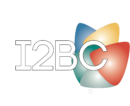Strategic axes confront the future
The organization and maintenance of the internal structure of cells, both eukaryotic and prokaryotic, are essential to their survival. Specialized compartments are either delimited by membranes (mitochondria, nucleus, endoplasmic reticulum, chloroplasts…), or formed by liquid phase separation phenomena (nucleolus, nuclear or cytoplasmic bodies, viral factories…). Exchanges between these compartments ensure the coordination of their activities, which involves complex and dynamic networks of macromolecules and macromolecular assemblies (cytoskeleton, motors, transporters, lipid or chromatin phases, membrane- membrane contacts…). The dysfunctions of this organization are at the origin of many pathologies.
SCIENTIFIC CHALLENGES FOR I2BC
- Role of the cytoskeleton and motors for force generation and mechanosensing in cell proliferation and migration.
- Physicochemical properties and function of non-membrane compartments (liquid organelles, self- assemblies).
- Roles of membrane remodeling and dynamic interactions between compartments.
- Changes of these organizations and cellular responses during variations in physiological conditions, cell cycle, stress.
- Origin and consequences of dysfunctions of cellular organization in pathologies.
Strategic Axis coordinators:
Renaud Legouis, Ambre Sala, José Luis Vazquez Ibar
Proper cellular function requires the correct processing of genetic information. This Research Axis aims to determine how the genome sequence is reliably maintained, how the transfer from DNA sequence to RNA synthesis to protein production is achieved, and how dysfunctions in these processes cause cellular pathologies. This axis incorporates many cellular processes, including DNA replication, DNA repair and DNA recombination, gene expression and gene regulation, RNA stability and RNA translation and protein maturation. To address these biological questions, a wide range of methodologies can be applied, which include genomics assays, structural biology approaches, imaging techniques, single-cell approaches, bioinformatics data analysis and biophysical and mathematical modeling in a large variety of model systems and disease models.
SCIENTIFIC CHALLENGES FOR I2BC
- Characterize molecular processes and mechanisms responsible for genome maintenance and chromosome segregation.
- Analyze relationships between chromosome organization, gene expression and genome maintenance mechanisms.
- Study the roles of RNAs and RNA modifications on cellular physiology.
- Define how these processes are controlled along the cell cycle, upon variation of physiological conditions, upon endogenous or environmental stress and characterize associated response mechanisms.
- Understand dysfunctions of genetic information processing that are responsible for cancer, aneuploidy, developmental defects or aging.
Strategic Axis coordinators:
Chloé Girard, Emanuele Biondi, Olivier Namy
Virus, bacteria, archaea, parasites and yeast have evolved to be able to invade a wide range of hosts in a symbiotic or pathogenic manner. They are also able to modify the host biological processes (transcription, translation, transport, etc.), inhibit the host defenses, put in place new cellular compartments, or modify expression of the host genome. Moreover, these microorganisms can rapidly mutate, incorporate new genes into their genome or transfer genes into the host genome, playing a major role in the evolution of species. As we have seen with the current pandemic, it is important to continue to study these organisms using a multitude of approaches and techniques.
SCIENTIFIC CHALLENGES FOR I2BC
- Understand how microbes interact, invade, persist, proliferate, evade, differentiate and/or cause disease in the host cell.
- Analyze the origin, dissemination and evolution of microbes resistance to drugs.
- Study the host defense mechanisms, including how the host reprograms to fight against the microbe.
- Develop new antimicrobial strategies.
Strategic Axis coordinators:
Audrey Esclatine, Denis Faure, Yves Gaudin
Biomimetic and synthetic biology approaches require a detailed understanding of macromolecular machineries and cellular metabolism. Thus, the characterization and understanding of photosynthetic conversion and storage of light energy is essential for bio-inspired engineering of photo-catalysts (water oxidation, proton reduction, C02 capture). The elucidation of specialized metabolites biosynthetic pathways provides tools and bricks for the development of innovative biological systems implementing original synthetic pathways for the production of highly valuable molecules. Such engineered systems (artificial proteins, scaffold bacteria) are of great interest for applications in the fields of energy, health and environment.
SCIENTIFIC CHALLENGES FOR I2BC
- Engineering novel enzymes and modules for supramolecular assemblies
- Characterizing in detail photosynthesis and its regulation and develop artificial photocatalysts dedicated to the use of solar energy
- Understanding specialized metabolites biosynthetic pathways and creating novel molecules of therapeutic or energetic interest by synthetic biology.
- Reprogramming organisms for the production of molecules of interest, for optimization of CO2 capture and atmospheric nitrogen and for remediation
Strategic Axis coordinators:
Sylvie Lautru, Pavel Muller, Agathe Urvoas




